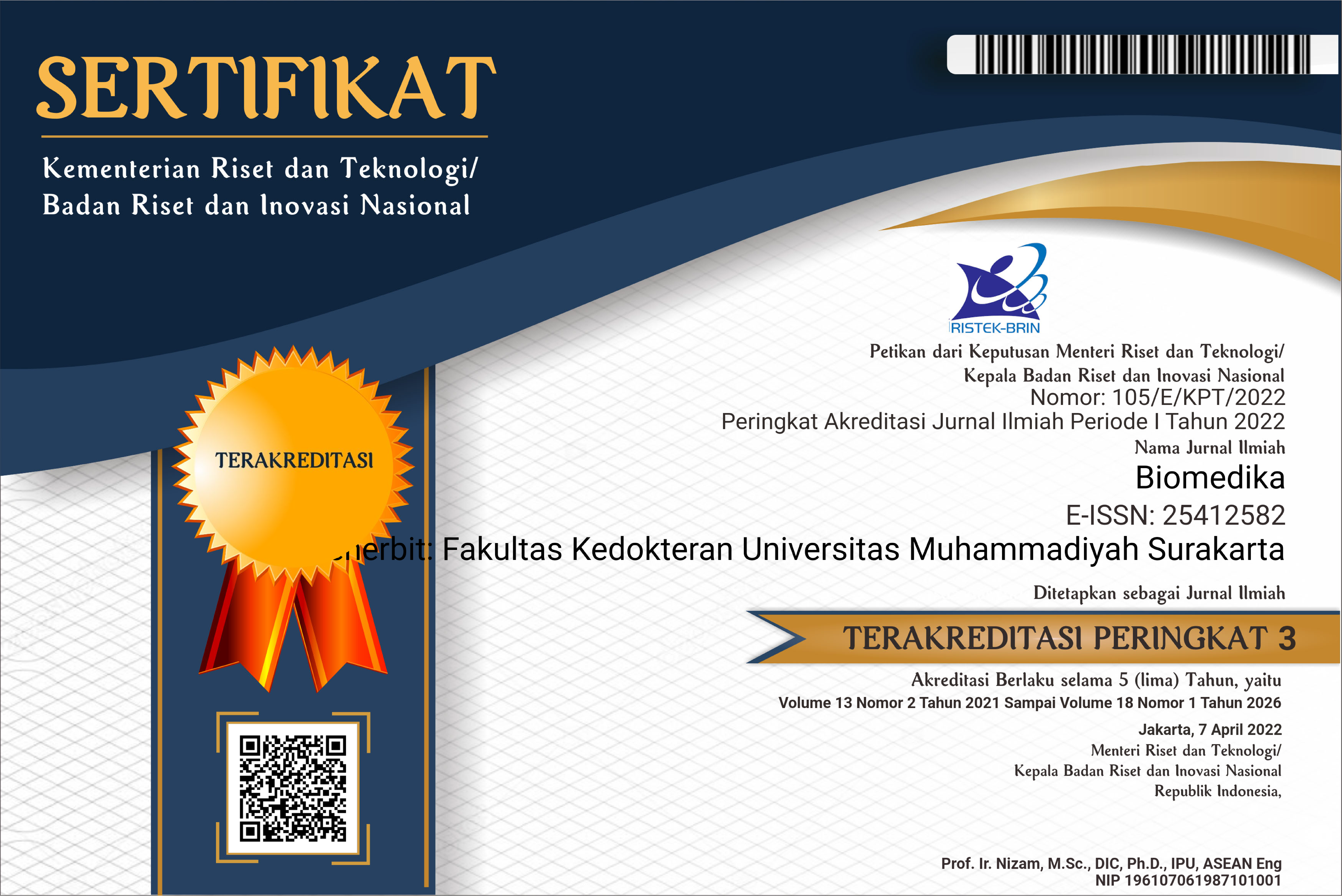CURRENT CONCEPT AND MANAGEMENT OF FEMORAL SHAFT FRACTURES
DOI:
https://doi.org/10.23917/biomedika.v15i2.3310Keywords:
Femoral Shaft Fracture, Non-Operative Management, Operative ManagementAbstract
ABSTRACT
Femoral shaft fractures are severe injuries and are often associated with a high impact trauma mechanism, frequently seen in multiple injured patients. In contrast an indirect trauma mechanism can lead to a complex femoral shaft fracture especially in elderly patients with minor bone stock quality. Hence management of femoral shaft fractures is often directed by co-morbidities, additional injuries and the medical condition of the patient. Timing of fracture stabilization is depended on the overall medical condition of the patient, but definite fracture fixation can often be implemented in the early total care concept in management of multiple injured patients. Femoral shaft fractures (FSF) typically occur in a bimodal distribution, high-energy trauma in the young population, and lower energy trauma in the elderly population. FSFs are also associated with other comorbidities necessitating a thorough advanced trauma life support (ATLS) assessment and interdisciplinary care. Intramedullary nailing (IMN) is the most common treatment of physiologically stable patients. The goal of fixation is early healing and long-term functional recovery. Treatment of modern-day femoral shaft fractures results in excellent outcomes.
ABSTRAK
Fraktur Shaft Femur (FSF) merupakan cedera yang parah dan sering dikaitkan dengan mekanisme trauma high-impact, sering dijumpai pada pasien dengan cedera multipel. Sebaliknya mekanisme trauma tidak langsung dapat menyebabkan FSF yang kompleks terutama pada pasien usia lanjut dengan kualitas cadangan tulang yang minim. Oleh karena itu penatalaksanaan FSF sering disesuaikan dengan penyakit penyerta, cedera tambahan, dan kondisi medis pasien. Waktu dilakukannya stabilisasi fraktur bergantung pada kondisi medis pasien secara keseluruhan, tetapi fiksasi fraktur yang definitif sering kali dapat dilakukan dalam manajemen awal pasien dengan cedera multipel. FSF dapat terjadi pada dua kelompok usia. Pada usia muda, penyebabnya adalah trauma energy tinggi dan pada usia tua penyebabnya adalah trauma energy rendah. FSF juga dikaitkan dengan komorbiditas lain sehingga membutuhkan penilaian Advanced Trauma Life Support (ATLS) secara cermat dan perawatan interdisipliner. Intermedullary Nailing (IM) merupakan tatalaksana yang paling umum dilakukan pada penanganan pasien yang stabil secara fisiologis. Tujuan fiksasi adalah penyembuhan dini dan pemulihan fungsional jangka panjang. Pengobatan FSF masa kini memiliki hasil yang sangat baik.
Downloads
Submitted
Published
Issue
Section
License
Copyright (c) 2023 Biomedika

This work is licensed under a Creative Commons Attribution 4.0 International License.












